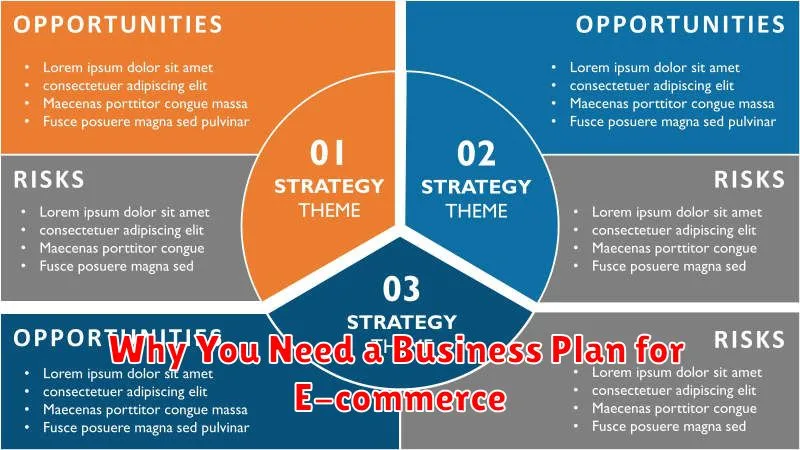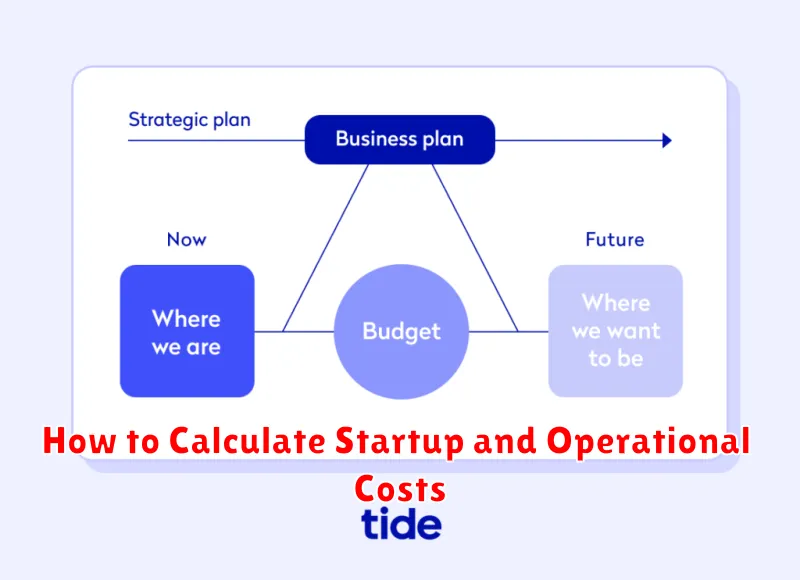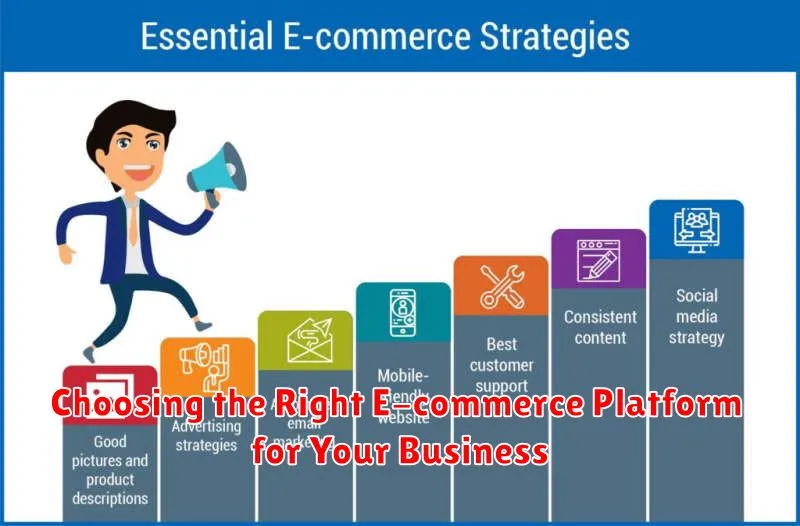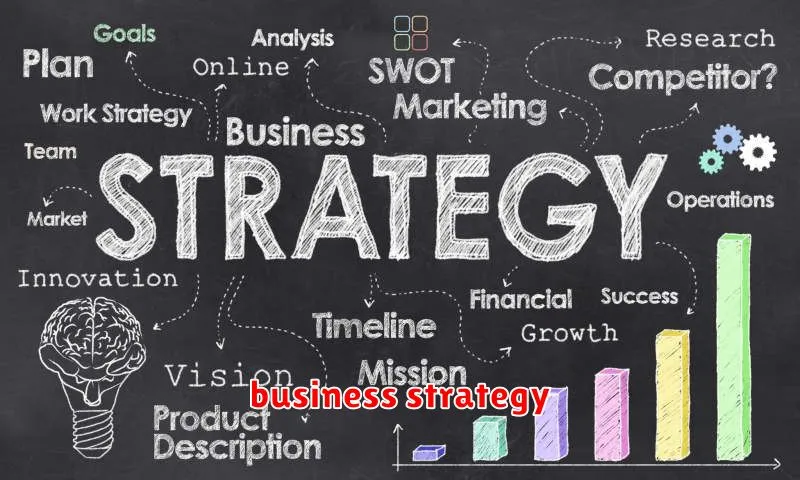Creating a winning business plan is crucial for the success of your online store. This comprehensive guide will walk you through the essential steps of developing a robust plan that covers market analysis, competitive strategies, financial projections, and marketing tactics. Learn how to craft a compelling narrative that attracts investors and secures funding, ensuring your e-commerce business thrives in the competitive digital marketplace. We’ll cover everything from defining your target audience and value proposition to outlining your sales strategy and operational plan, providing you with the tools to build a successful online business.
Why You Need a Business Plan for E-commerce

A business plan is crucial for e-commerce success, serving as your roadmap to navigate the competitive online marketplace. It provides a clear vision and strategy, guiding your decisions and actions.
Funding acquisition is significantly easier with a well-structured business plan. Investors and lenders require a comprehensive overview of your business model, market analysis, and financial projections to assess risk and potential return on investment.
A business plan forces you to thoroughly analyze your target market, identifying your ideal customer and their needs. This crucial step ensures your marketing efforts are focused and effective, maximizing your return on investment.
Beyond securing funding and defining your target market, a business plan helps you establish clear goals and metrics for measuring your progress. This allows for consistent monitoring and adjustment of your strategies, improving your chances of long-term success.
Finally, a comprehensive business plan serves as a living document, regularly reviewed and updated to adapt to the dynamic nature of the e-commerce landscape. It allows for proactive adjustments and helps you stay ahead of the curve.
Defining Your Target Market and Audience
Defining your target market and audience is crucial for a successful online store. It’s about identifying the specific group of people most likely to buy your products or services. This goes beyond simply stating a broad demographic; you need to understand their needs, wants, pain points, and online behavior.
Consider factors like demographics (age, gender, location, income), psychographics (lifestyle, values, interests), and buying behavior (online shopping habits, preferred payment methods). Creating detailed buyer personas – representative profiles of your ideal customers – can be incredibly helpful in this process.
Understanding your target audience informs every aspect of your business plan, from product development and marketing strategies to website design and customer service. A well-defined target market allows for more effective marketing campaigns, leading to higher conversion rates and ultimately, increased profitability. Without this clarity, your efforts will likely be scattered and inefficient.
Setting Realistic Business Goals and Milestones
Setting realistic goals and milestones is crucial for a successful online store. Avoid overly ambitious targets that can lead to discouragement. Instead, focus on achievable steps that contribute to your overall vision.
Start by defining your short-term goals (e.g., achieving a specific number of sales within the first three months, building a social media following). These should be measurable, attainable, relevant, and time-bound (SMART).
Next, establish long-term goals (e.g., reaching a certain revenue level within a year, expanding your product line). Break down these larger goals into smaller, manageable milestones. This phased approach makes progress more visible and manageable.
Regularly review and adjust your goals and milestones. Market conditions and unforeseen circumstances may require adjustments. Flexibility is key to adapting to changing dynamics.
Using a goal-setting framework like the SMART method (Specific, Measurable, Achievable, Relevant, Time-bound) can significantly improve your chances of success. This ensures clarity and provides a benchmark for tracking progress.
Remember to celebrate your accomplishments along the way. Recognizing milestones boosts morale and keeps you motivated to continue working toward your long-term objectives.
How to Calculate Startup and Operational Costs

Accurately calculating startup and operational costs is crucial for a successful online store business plan. This involves identifying all expenses needed to launch and maintain your business.
Startup costs encompass one-time expenses incurred before your store opens. These include website development (including design, hosting, and e-commerce platform fees), inventory purchasing, legal and registration fees (business licenses, permits), and marketing materials (for initial promotions). Don’t forget to factor in costs associated with payment gateway setup and any necessary software or equipment purchases.
Operational costs are recurring expenses needed to keep your business running. These include website maintenance, hosting fees, payment processing fees, marketing and advertising (ongoing campaigns), customer service costs, shipping and fulfillment (packaging, postage, and potentially warehousing), and employee salaries (if applicable). Also, consider office supplies, utilities, and insurance.
To calculate these costs, create detailed spreadsheets itemizing each expense. Research prices from various vendors to find competitive rates. Consider both fixed (consistent monthly costs) and variable (costs that fluctuate based on sales volume) expenses for a comprehensive understanding of your financial needs.
Accurate cost projections are essential for securing funding, setting realistic pricing strategies, and monitoring your business’s financial health. Underestimating these costs can severely jeopardize your online store’s success. Regularly review and adjust your cost projections based on actual performance.
Creating a Marketing and Sales Strategy
A robust marketing and sales strategy is crucial for online store success. It should clearly define your target audience, outlining their demographics, needs, and online behavior. Understanding your audience allows for targeted marketing efforts.
Next, establish your value proposition – what makes your products or services unique and desirable? Highlight this in all marketing materials. Consider your marketing channels; will you focus on social media marketing, search engine optimization (SEO), email marketing, or paid advertising (PPC)? A multi-channel approach often yields the best results.
Develop a clear sales process. This encompasses everything from attracting customers to closing sales and ensuring customer satisfaction. Conversion rate optimization (CRO) is key; analyze your website’s performance and identify areas for improvement to enhance sales. Regularly track key metrics such as website traffic, conversion rates, customer acquisition cost (CAC), and return on investment (ROI) to measure your strategy’s effectiveness and make data-driven adjustments.
Finally, allocate a realistic budget to support your marketing and sales activities. Consider the costs associated with each channel and adjust your spending based on performance data. Remember, flexibility is essential; be prepared to adapt your strategy as needed based on market trends and customer feedback.
Choosing the Right E-commerce Platform for Your Business

Selecting the right e-commerce platform is crucial for your online store’s success. Your choice will significantly impact scalability, functionality, and overall costs. Consider your business needs and budget carefully.
Factors to consider include the size of your inventory, the complexity of your products, your technical skills, and your long-term growth plans. A simple platform might suffice for small businesses with limited product offerings, while larger enterprises might require more robust and scalable solutions.
Popular options include Shopify (user-friendly, scalable, app-rich), Magento (highly customizable, powerful, complex), and WooCommerce (flexible, open-source, integrates with WordPress). Each offers different features and pricing models; research thoroughly to find the best fit.
Before committing, evaluate ease of use, transaction fees, security features, marketing tools, and customer support. Consider using a free trial or demo version to test the platform before making a final decision. Choosing the wrong platform can hinder growth, so careful planning is essential.
Ultimately, the best e-commerce platform is the one that best supports your specific business objectives and allows you to efficiently manage your online store and reach your target audience. Prioritize functionality, scalability, and cost-effectiveness in your selection process.
Financial Planning and Revenue Forecasting
A robust financial plan is crucial for a successful online store. It provides the roadmap for your business’s financial health and guides strategic decision-making. Revenue forecasting is a core component, predicting future sales based on market research, historical data (if available), and projected growth. This forecast should account for various factors like seasonality, marketing campaigns, and anticipated changes in customer behavior.
Beyond revenue, your financial plan must include detailed expense projections. This includes operational costs (website hosting, marketing, etc.), inventory management, shipping and handling, and administrative expenses. Profitability analysis, comparing projected revenues against expenses, should be included to identify potential challenges and ensure the business model is viable.
Develop realistic financial statements, including projected income statements, balance sheets, and cash flow statements. These statements present a holistic picture of your financial health and are essential for securing funding from investors or lenders. Regularly review and update your financial plan, adapting it based on performance and market dynamics. This iterative process ensures your financial strategy aligns with the evolving needs of your online store.
Funding sources should also be outlined. Will you use personal savings, seek loans, or explore crowdfunding? Clearly identifying your funding sources and their limitations will help avoid potential financial shortfalls. Finally, break-even analysis is vital, determining the sales volume needed to cover all expenses and achieve profitability. This helps establish realistic sales targets and provides a benchmark for success.
How to Continuously Improve Your Business Plan
A business plan isn’t a static document; it’s a living tool that needs regular updates to reflect market changes and your business’s evolution. Continuous improvement is crucial for long-term success.
Regularly review your key performance indicators (KPIs). Analyze sales figures, website traffic, customer acquisition costs, and other metrics. Identify areas performing well and areas needing attention. This data-driven approach helps you make informed decisions.
Seek feedback from various sources. Gather insights from your customers through surveys and reviews. Talk to your team about operational challenges and opportunities. Consider competitor analysis to identify market trends and potential threats.
Adapt your marketing and sales strategies. Based on your KPI analysis and feedback, adjust your marketing campaigns, pricing strategies, and sales processes. Experiment with different approaches to optimize your results.
Embrace flexibility and iterative planning. Don’t be afraid to adjust your business plan as needed. The ability to adapt to changing circumstances is a key characteristic of successful businesses. Regularly revisit and refine your strategies to align with your evolving goals.
Stay informed about industry trends. Keep abreast of the latest developments in your industry, including technological advancements, consumer preferences, and regulatory changes. This proactive approach allows you to stay ahead of the competition and adapt your business plan accordingly.

